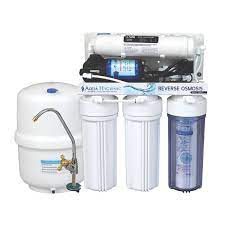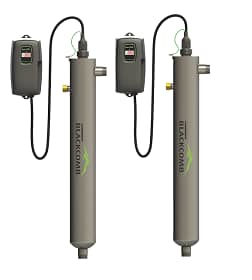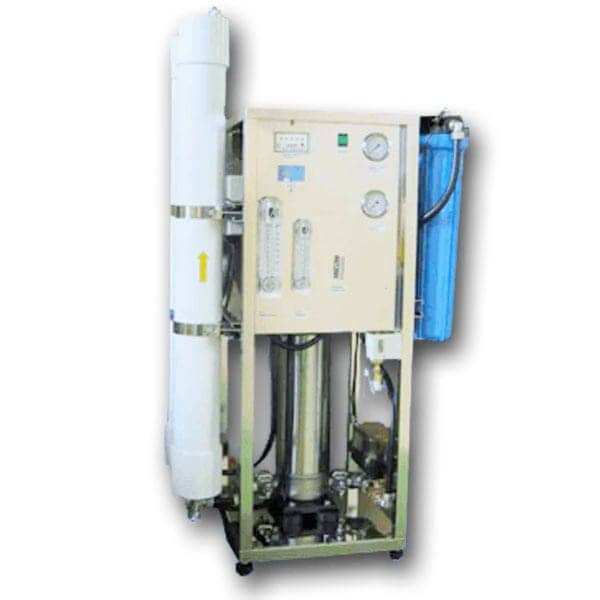Description
Domestic Ro System
Are you looking for a reliable and cost-effective way to ensure clean and safe drinking water for your family? If so, then you may want to consider a domestic RO system. In this article, we will introduce you to domestic RO systems, their benefits, how they work, and what to consider when buying one.
What is a Domestic RO System?
Domestic RO (Reverse Osmosis) system is a water filtration system designed for residential use. RO technology uses a semi-permeable membrane to remove impurities, contaminants, and dissolved solids from water, leaving only pure water molecules behind. The RO process involves three stages:
- Pre-filtration: In this stage, the water goes through a sediment filter to remove dirt, sand, and other large particles.
- RO membrane filtration: In this stage, the water passes through the semi-permeable membrane, which removes impurities, contaminants, and dissolved solids.
- Post-filtration: In this stage, the purified water goes through a carbon filter to remove any remaining impurities and improve the taste.
Benefits of a Domestic RO System
Here are some of the key benefits of a domestic RO system:
- Clean and safe drinking water: A domestic RO system removes impurities, contaminants, and dissolved solids from water, making it safe and clean for consumption.
- Better taste: A domestic RO system also improves the taste of water by removing unpleasant odors and flavors.
- Cost-effective: Buying bottled water can be expensive, especially if you have a large family. A domestic RO system provides a cost-effective solution to ensure clean and safe drinking water for your family.
- Convenient: With a domestic RO system, you can have access to clean and safe drinking water at any time, without the need to go out and buy bottled water.
How Does a Domestic RO System Work?
A domestic RO system uses a semi-permeable membrane to remove impurities, contaminants, and dissolved solids from water. The RO process involves the following steps:
- Pre-filtration: In this stage, the water goes through a sediment filter to remove dirt, sand, and other large particles.
- RO membrane filtration: In this stage, the water passes through the semi-permeable membrane, which removes impurities, contaminants, and dissolved solids.
- Post-filtration: In this stage, the purified water goes through a carbon filter to remove any remaining impurities and improve the taste.
- Storage: The purified water is stored in a tank until it is needed.
- Dispensing: When you turn on the tap, the purified water is dispensed through a separate faucet.
Factors to Consider When Buying a Domestic RO System
Here are some factors to consider when buying a domestic RO system:
- Water quality: You should consider the quality of your tap water to determine the type of RO system you need. If your water is heavily contaminated, you may need a more advanced RO system.
- Budget: Domestic RO systems come in different price ranges. You should consider your budget when choosing a system.
- Water usage: You should also consider your daily water usage when choosing a system. A larger family may need a system with a higher capacity.
- Maintenance: RO systems require regular maintenance, such as filter replacement. You should consider the maintenance requirements when choosing a system.
Conclusion
A domestic RO system provides a cost-effective and convenient solution to ensure clean and safe drinking water for your family. By removing impurities, contaminants, and dissolved solids from water, a domestic RO system not only makes it safe for consumption but also improves its taste. When choosing a domestic RO system, you should consider factors such as water quality, budget, water usage, and maintenance requirements. With the right domestic RO system, you can have access to clean and safe drinking water at any time, right in your own home.
FAQs
- Can a domestic RO system remove bacteria and viruses from water?
Yes, a domestic RO system can remove bacteria and viruses from water, as long as it is properly maintained and the membrane is not damaged.
- How often should I replace the filters in my domestic RO system?
It depends on the type of filter and the manufacturer’s recommendations. Generally, sediment filters should be replaced every 6-12 months, and carbon filters every 6-12 months. The RO membrane may need to be replaced every 2-3 years.
- Can a domestic RO system remove fluoride from water?
Yes, a domestic RO system can remove fluoride from water, but it may require a special membrane or additional treatment.
- How much water does a domestic RO system waste?
A domestic RO system can waste anywhere from 2 to 4 gallons of water for every gallon of purified water produced. However, some newer systems are designed to reduce waste by reusing the rejected water for other purposes.
- Can I install a domestic RO system myself?
Yes, it is possible to install a domestic RO system yourself, but it may require some plumbing skills and tools. It is recommended to follow the manufacturer’s instructions carefully or to hire a professional plumber for installation.








Aqua Filter –
Aquaafilter.com exceeded my expectations with their water filter installation services. Their team was very professional and efficient, and they installed my system with no hassle. Highly recommend!